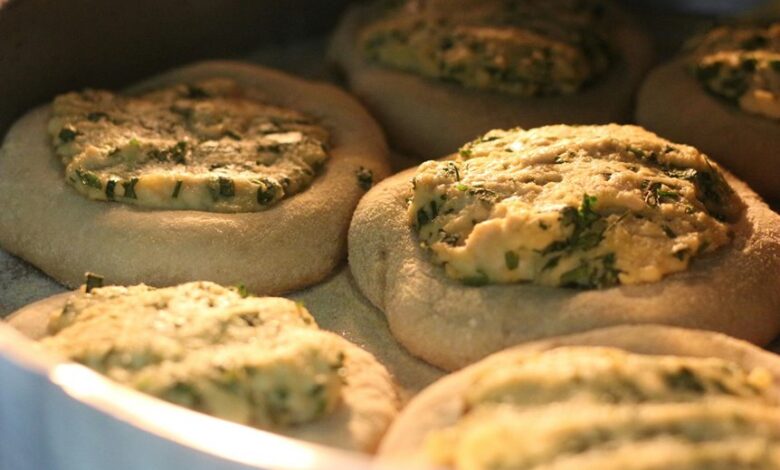How to Make Picadillo: A Step-by-Step Guide to This Delicious Dish

Picadillo is a flavorful dish that combines ground beef with a medley of vegetables and spices. Its rich history and variations make it a beloved recipe across cultures. Preparing this dish involves several key steps, each contributing to its distinctive taste. From selecting the right ingredients to the final presentation, there is much to explore. Understanding these techniques can transform a simple meal into a culinary experience. What comes next is essential for mastering this classic dish.
Ingredients You’ll Need for Picadillo
To create a delicious picadillo, one must gather an essential array of ingredients that harmonize to form this beloved dish.
Traditional recipes often call for ground beef, tomatoes, bell peppers, and spices, while picadillo variations may incorporate olives, raisins, or even different proteins.
Each ingredient contributes to the rich flavors, inviting both freedom of expression and creativity in the kitchen.
Preparing the Vegetables
Preparing the vegetables for picadillo is a crucial step that enhances the dish’s flavor and texture.
Essential ingredients like bell peppers, onions, and garlic must be chopped with precision to ensure even cooking and optimal taste.
Mastering chopping techniques not only improves presentation but also allows the vegetables to release their natural aromas during the cooking process.
Essential Vegetables Needed
Essential to crafting a flavorful picadillo are the vegetables that provide both texture and depth to the dish.
Onions, bell peppers, and tomatoes play pivotal roles, enhancing the flavor profiles and harmonizing with essential herbs like cilantro and oregano.
These vibrant, fresh ingredients not only elevate the dish but also offer a medley of colors, ensuring a visually appealing and satisfying meal.
Chopping Techniques Explained
The vibrant vegetables that contribute to picadillo’s rich flavor require careful preparation to maximize their potential.
Mastering knife skills is essential, as precise chopping methods enhance texture and taste. Dicing onions, bell peppers, and tomatoes uniformly ensures even cooking and flavor distribution.
Whether using a rocking motion or a chef’s chop, the right technique elevates this dish, inviting creativity and freedom in every bite.
Cooking the Ground Meat
In the preparation of picadillo, choosing the right ground meat is crucial for achieving the desired flavor and texture.
Once selected, mastering the art of browning the meat enhances its richness, creating a savory base for the dish.
Finally, the careful addition of seasonings elevates the overall taste, making each bite a delightful experience.
Selecting the Right Meat
Choosing the right meat for picadillo is crucial, as the flavor and texture of the dish largely depend on this decision.
Prioritizing meat quality is essential; opt for fresh, high-quality cuts such as chuck or round.
These options provide the perfect balance of flavor and tenderness, ensuring a satisfying base for the dish.
Selecting the right meat cuts elevates picadillo to a truly memorable experience.
Browning Techniques Explained
After selecting the right meat, the next step in preparing picadillo involves mastering the browning techniques that enhance flavor and texture.
Employing effective searing methods, such as sautéing over medium-high heat, allows for a rich caramelization.
Temperature control is crucial; too low, and the meat stews instead of browning, while too high can cause burning.
Achieving the perfect balance is key to a delicious picadillo.
Seasoning for Flavor Enhancement
While the meat sizzles in the pan, seasoning becomes essential for transforming ground meat into a flavorful foundation for picadillo.
To achieve this, a balanced combination of spice blends—such as cumin, oregano, and paprika—enhances the meat’s natural richness.
Exploring diverse flavor profiles can elevate the dish, inviting a symphony of tastes that resonate with the spirit of culinary freedom and creativity.
Combining the Ingredients
To create a harmonious blend of flavors in picadillo, one must skillfully combine a variety of ingredients that each contribute their unique essence.
The careful attention to ingredient ratios ensures balanced flavor profiles, enhancing the dish’s richness. Ground meat, vegetables, and seasonings meld together, creating a comforting tapestry of tastes.
This careful combination transforms simple components into a vibrant, satisfying meal that delights the senses.
Serving Suggestions
Once the ingredients have melded together to create the flavorful base of picadillo, the next step involves presenting this dish in a way that enhances its appeal. Traditional accompaniments and side dishes elevate the meal experience. Consider serving picadillo with rice, black beans, or fried plantains for a delightful combination that honors its cultural roots.
| Traditional Accompaniments | Side Dishes | Serving Suggestions |
|---|---|---|
| White Rice | Fried Plantains | Garnish with cilantro |
| Avocado Slices | Black Beans | Serve in tortilla wraps |
| Sautéed Bell Peppers | Cornbread | Top with lime juice |
Storing and Reheating Leftovers
Properly storing and reheating leftovers is crucial for maintaining the delicious flavors and textures of picadillo.
For optimal leftover storage, use airtight containers and refrigerate within two hours.
When ready to enjoy again, employ reheating methods such as stovetop or microwave, ensuring the dish reaches a safe temperature.
This approach preserves the savory essence of picadillo, allowing for a delightful second serving.
Conclusion
In conclusion, Picadillo stands as a timeless dish that marries rich flavors and comforting textures, reminiscent of family gatherings and shared memories. As the savory aroma wafts through the kitchen, it’s easy to imagine a bygone era where the clatter of pots and laughter filled the air. With its vibrant ingredients and simple preparation, this classic recipe invites everyone to savor a taste of tradition. Enjoy your culinary journey, and let each bite transport you to a festive table of the past.




